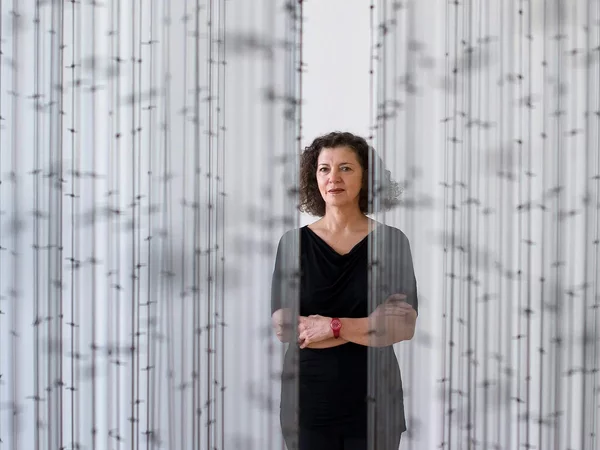Mona Hatoum
Mona Hatoum was born into a Palestinian family in Beirut in 1952. While on a short visit to London in 1975 the outbreak of the Lebanese Civil War prevented her from returning home and she has lived in London ever since.
She has held solo exhibitions in numerous museums in Europe, the United States, Canada and Australia. She has also participated in many important exhibitions including the Venice Biennale (1995 and 2005), Documenta, Kassel (2002 and 2017), Biennale of Sydney (2006), Istanbul Biennial (1995 and 2011) and Moscow Biennale of Contemporary Art (2013).
Recent solo exhibitions include a major survey organised by Centre Pompidou, Paris (2015) that toured to Tate Modern, London and KIASMA, Helsinki (2016). Another survey was initiated by the Menil Collection, Houston (2017) and travelled to the Pulitzer Arts Foundation, St Louis (2018).
Hatoum was awarded the Joan Miró Prize (2011), the 10th Hiroshima Art Prize by the city of Hiroshima (2017) and most recently the Praemium Imperiale by the Japan Art Foundation for her lifetime achievements in the category of sculpture (2019). She is the current recipient of the 2020 edition of the Julio González Prize awarded since 2000 by the Institut Valencià d’Art Modern (IVAM) where her monographic exhibition is currently on view until September 12, 2021.

Recollection, 1995
Mona Hatoum is an artist whose experience of conflict and displacement has informed her work. Her frequent use of her own hair in her work brings into focus the human body, its intimacy and its traces. Her installation, Recollection, comprises a table with a loom used to weave human hair, hundreds of small balls of hair strewn around the floor as well as long strands hanging from the ceiling down to shoulder height. Having spent several years collecting and rolling her own hair into cocoon-like balls between her palms, Hatoum eventually used this material for Recollection as part of the exhibition Inside the Visible in Kortrijk. Located inside a sixteenth-century beguinage, the installation acts as a commemoration of the women who once populated the building.